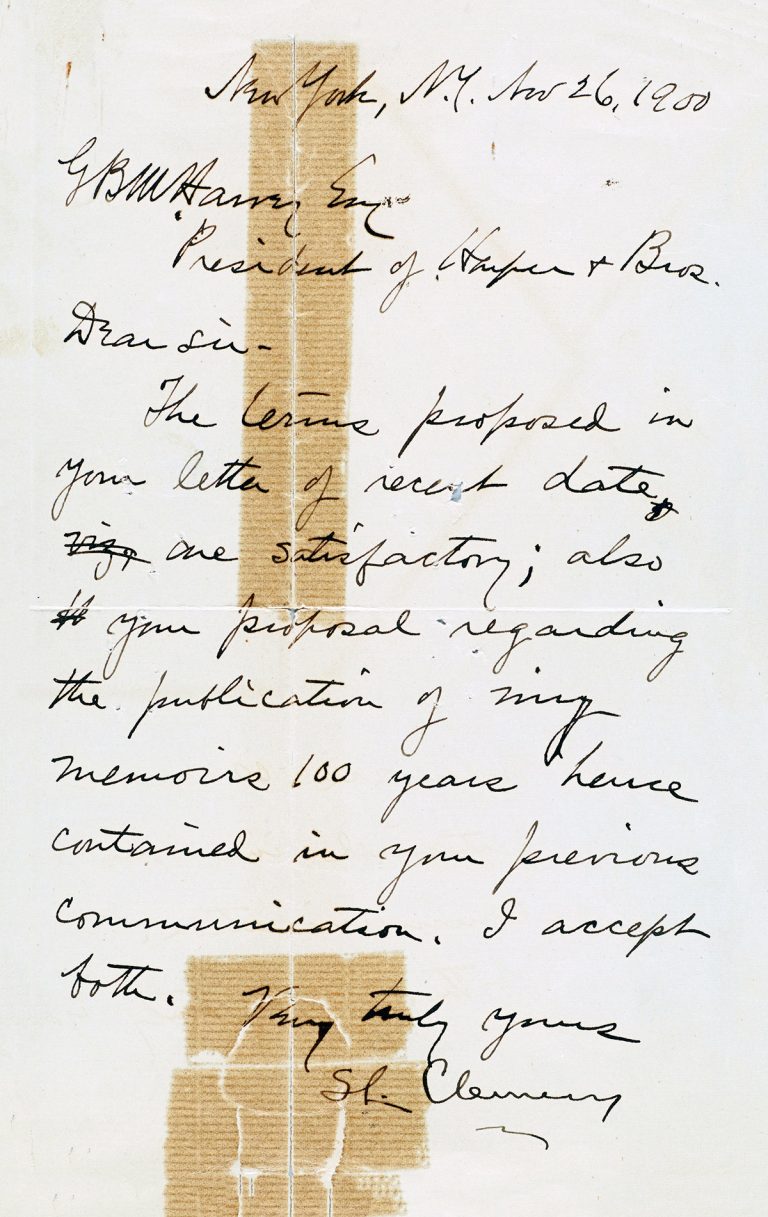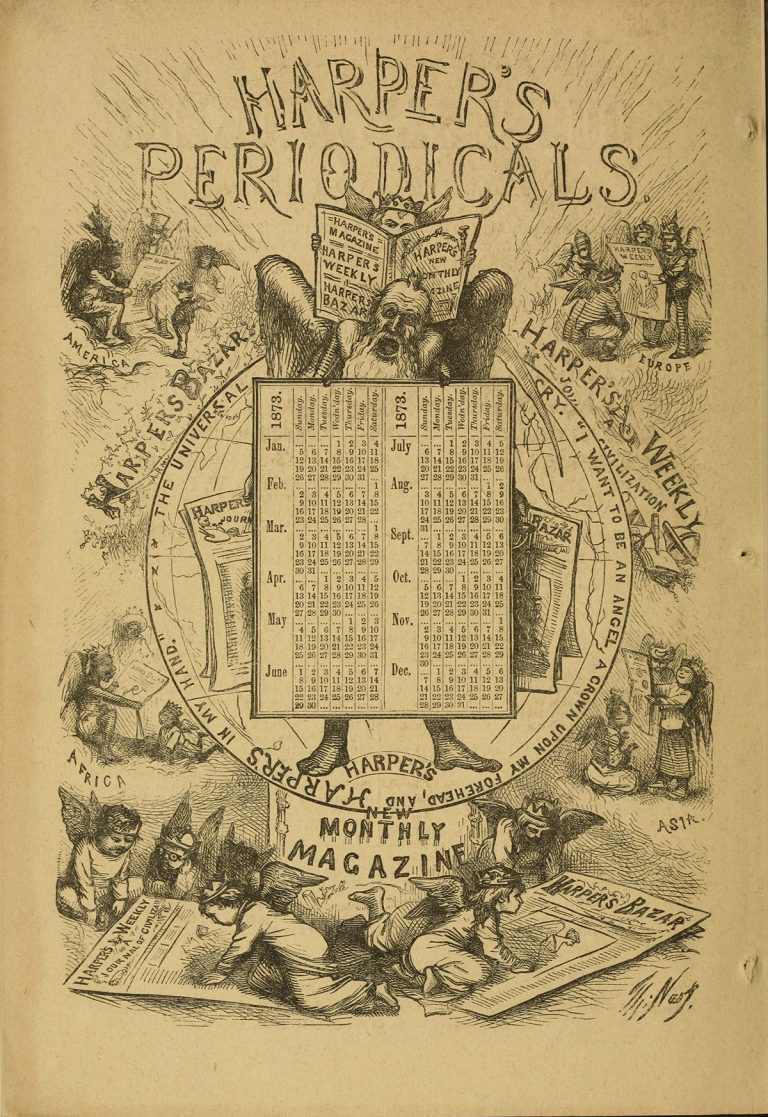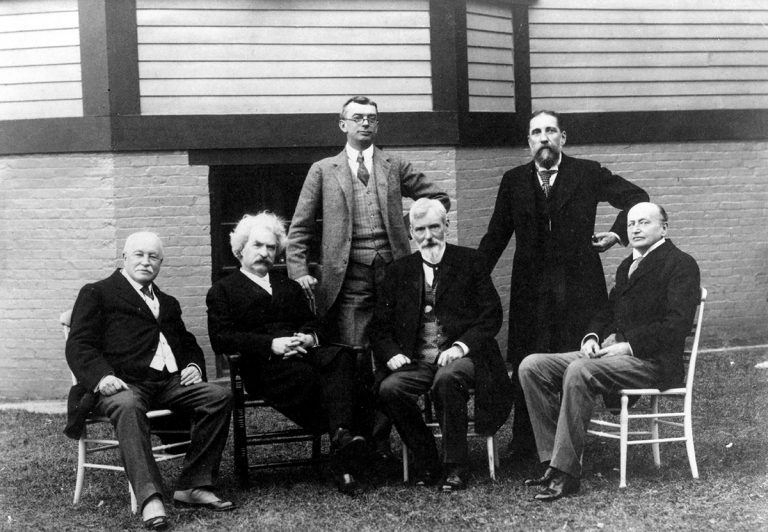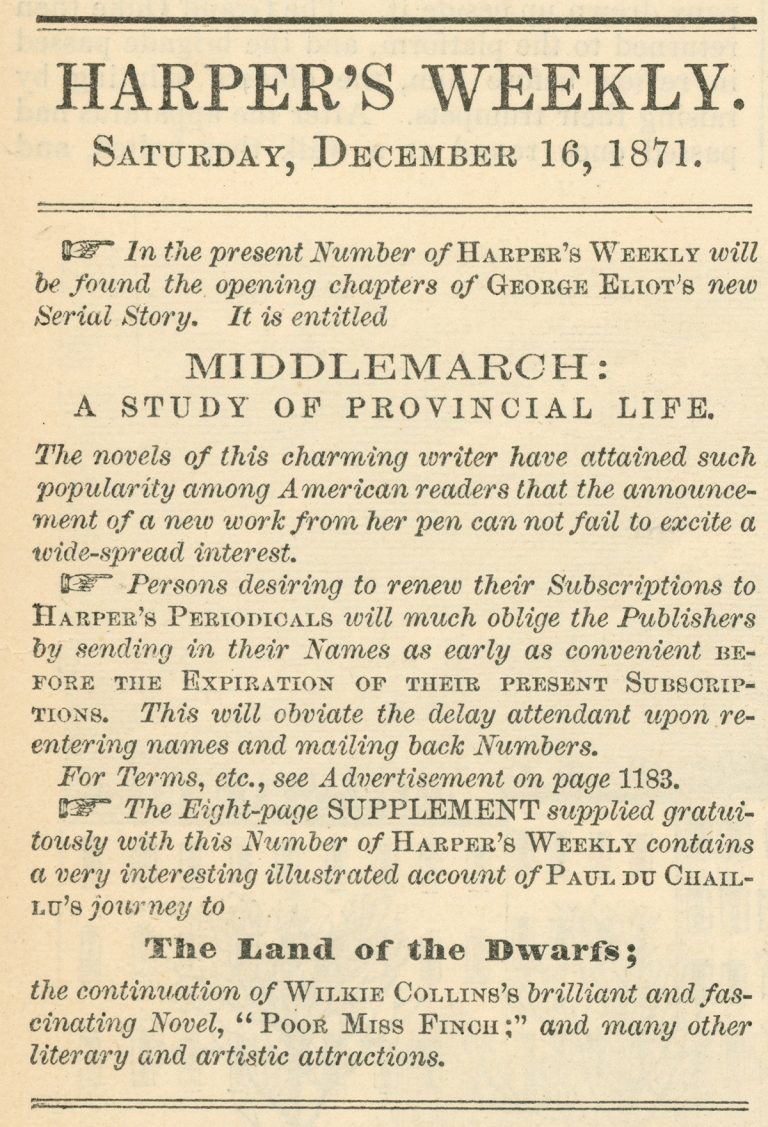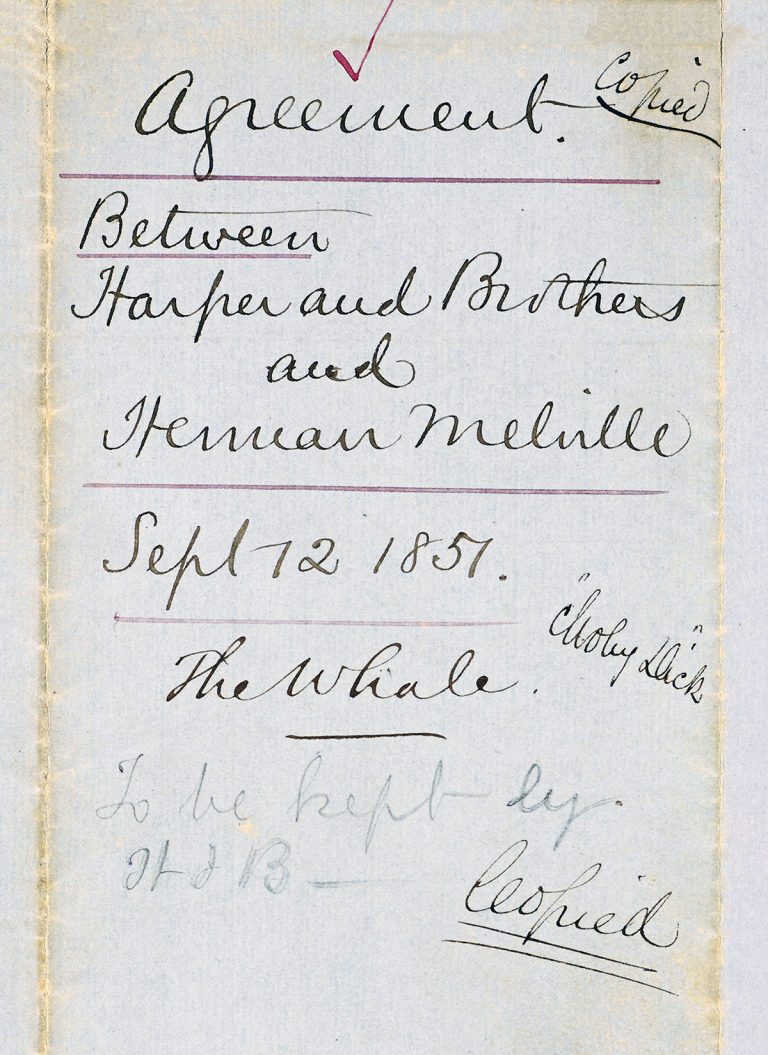Explore significant moments in HarperCollins history
A 1900 letter from Mark Twain (Samuel Clemens) to Harper & Brothers confirming their publishing agreement.
Mark Twain
In 1866, with mostly newspaper articles and other short works to his name, Mark Twain accepted an assignment from the Sacramento Union to produce a weekly column from Hawaii. Despite the success of this column, Twain craved the respectability that came with writing for a prestigious magazine.
He submitted his work to Harper’s New Monthly Magazine and “Forty-Three Days in an Open Boat” was published in the December 1866 issue. The article had no byline, and Twain eagerly awaited the January issue, in which a list of the previous year’s contributors would appear. However, he had not written his name clearly on the manuscript, and his first publication for Harper’s was attributed to “Mark Swain.”
From this memorable beginning, the relationship between publisher and writer continued until Twain’s death half a century later. A contract from 1895 that gave the publisher rights to multiple titles came just as Twain lost a fortune in his own failed publishing venture. Harper & Brothers paid a royalty of 15 to 20 percent on works that included Huckleberry Finn, Joan of Arc, and Tom Sawyer Abroad.
“I am mighty glad you are with Harper’s,” Twain once wrote to William Dean Howells, his close friend and columnist for Harper’s New Monthly Magazine. “I have noticed that good men in their employ go there to stay.”
Despite the well-established relationship between author and publisher, Harper & Brothers nearly lost Twain when it entered bankruptcy in 1899. Twain ultimately signed a lucrative contract that gave Harper & Brothers rights to all future works. This agreement helped to rebuild public confidence in the firm and also consolidated Twain’s work with one publisher.
—–
The house Samuel Clemens (aka Mark Twain) occupied in New York City is rumored to be haunted—click here to listen to an audio excerpt about Twain’s life and work from the HarperCollins NYC Author Audio Tour.
